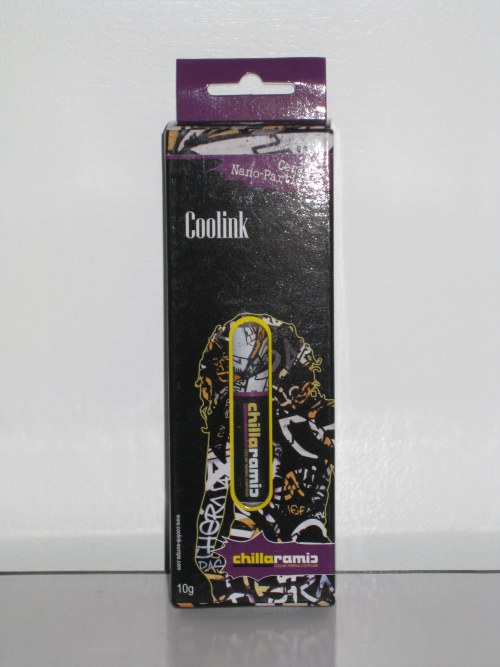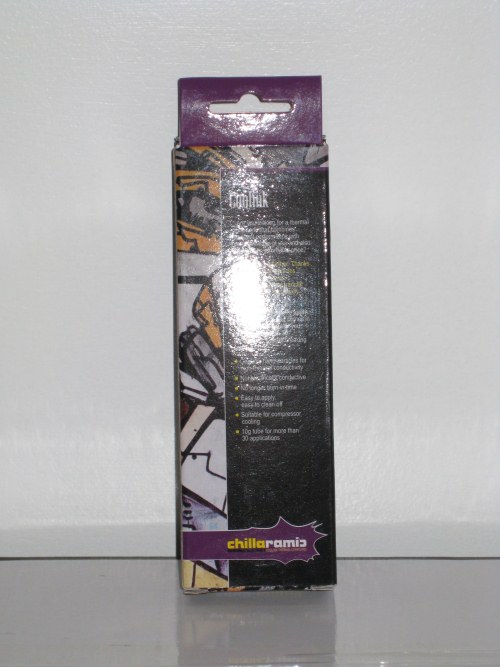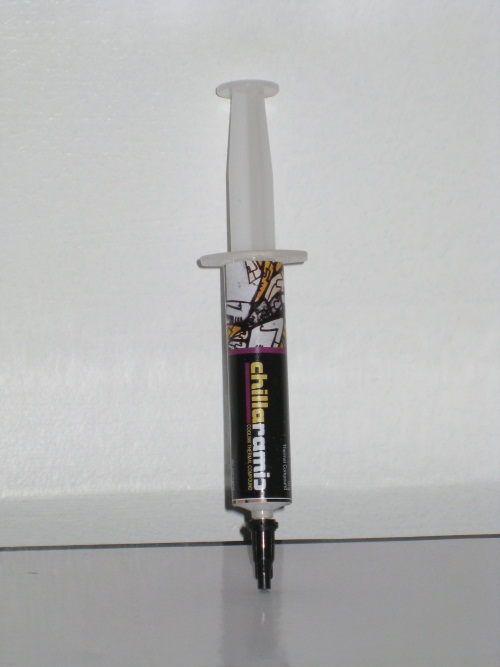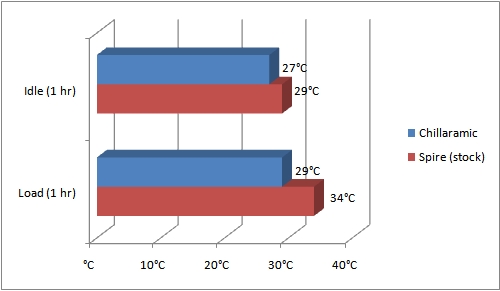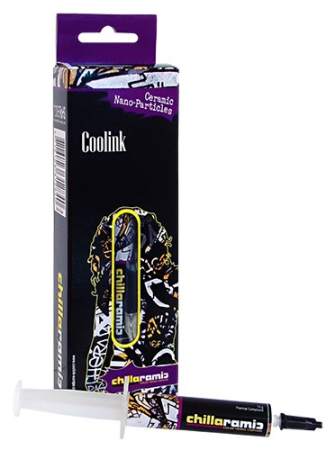
Does Nano Particles result in better Thermal Transfer?
Overall
Summary
A very good performer that’s easy to apply regardless of the grainy texture.
Pros
Very good performance and easy to apply.
Cons
Grainy texture!
Today we are going to test the Coolink Chillaramic Thermal compound. A good heatsink and fan are the main components in cooling a CPU, but a good thermal compound will help you achieve maximum cooling results. The Coolink Chillaramic comes in a 10g syringe, enough to apply about 30 applications.
The Chillaramic thermal compound comes in a nicely designed cardboard box that is easy to access, unlike those tightly sealed plastic enclosures that you need a sharp object to open. On the back of the package, it describes some of the product highlights, and inside nothing more than the syringe. I guess Coolink thought that applying the compound was fairly self-explanatory and did include instructions inside of the packaging.
TEST SYSTEM
| Motherboard | ASUS A8M2N-LA |
| CPU | AMD Athlon 64 2.4GHz |
| RAM | 2x Samsung PC2-4200 1GB |
| CPU Cooler | Spire TherMax CPU Cooler |
| Graphics Card | NVIDIA GeForce 6150 LE |
| Storage | Western Digital 250GB |
| Power Supply | HIPRO 250-Watt |
| PC Case | Compaq Presario SR2030NX Mid Tower |
TESTING
The first test was conducted using the thermal compound that came with the Spire TherMax Cooler and the last test is done using the Coolink Chillaramic thermal compound. To conduct the test we tested the temperature of the CPU on idle and on load. To get our temperature readings we used SpeedFan v4.40 and to load the CPU we used CPU-Burn-in v1.01 to push the CPU to 100%. The idle and the load temperatures are recorded after an hour in each state. Let’s test and see if the temperatures are lower using the Chillaramic thermal compound.
RESULTS
Not a big difference in the temperatures but there was a slight change. The compound does enhance the performance of the heat sink. On idle with the Spire TherMax compound, the core temperature of the CPU was 29 degrees. With the Chillaramic compound, the core temperature was around 27 degrees, which is a fairly significant decrease just from using a different compound. On load, the temperature of the TherMax compound was 35 degrees and with the Chillaramic Compound, the temperature was 34 degrees which improved cooling performance by one degree every degree helps.
EXPERIENCE
The Coolink Chillaramic Thermal compound is a bit on the grainy side, but easy to apply. You don’t need to apply much to the bottom of the heat-sink (About the size of a Dime) for it to work. You can apply a bit more if you feel the need to add a thicker coat. I would recommend having a damp cloth handy just to clean the tip of the syringe (It can get a little messy trying to put the cap back on to the syringe. Soap and water will get the compound off of your hands with no problems.
FINAL THOUGHTS
When conducting the test I didn’t expect to see a huge difference in cooling performance by using a different compound if any at all. The Chillaramic was impressive cooling my CPU another degree or two compared to the thermal compound that came with the Spire TherMax. It just goes to show that using a good thermal compound can give you added performance, which compliments using a good cooler and fan. I give the Coolink Chillaramic thermal compound 4 out of 5. I didn’t really care for the texture of the compound that was a bit grainy but it did make a difference when cooling my CPU and in the end that is all that counts.


